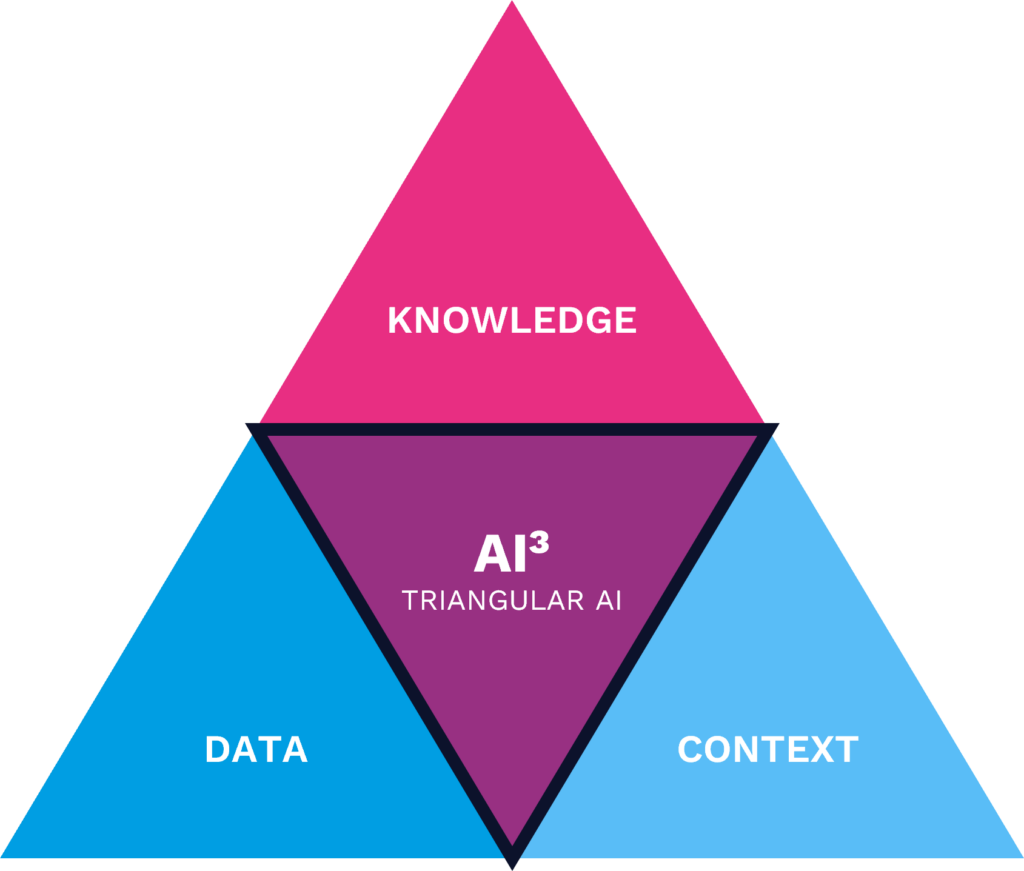Research on Machine Learning and Artificial Intelligence
Throughout its history, the field of Artificial Intelligence (AI) has seen several fundamental paradigm shifts. By and large, these can be summarized as transitioning from approaches such as rule-based expert systems which used symbolically expressed human knowledge to methods and models that rely on learning from examples.
Indeed, progress in the current era of Artificial Intelligence is largely due to Machine Learning (ML) systems such as Deep Neural Networks which use very large amounts of data to fit extremely high-dimensional models and can thus accomplish a wide variety of tasks.
Knowledge and Context
On the flip side, current AI systems thus tend to miss out on two powerful sources of intelligence: knowledge and context. However, given their remaining shortcomings, it seems that integrating reliable knowledge into learning processes will be the key to AIs reliably and trustworthily solve general tasks. Such knowledge can consist of representations learned in other contexts, of informed simulations, of mathematical descriptions of laws of the physical world, or of explicit knowledge provided by humans.
Moreover, many current AI algorithms are developed under the assumption of largely static and self-contained environments. Yet, application contexts tend to be variable and open. They may come with different available resources and hardware architectures, with varying degrees of access to the world for active sensing and experimentation, or with dynamic multi-modal interactions with humans.
Triangular AI
Research at the Lamarr Institute is therefore fundamentally shaped by our belief that we need yet another paradigmatic shift towards a third generation of AI which we call AI3, or Triangular AI.
The three dimensions of Triangular AI: data, knowledge and context
Lamarr scientists are committed to this vision and aim at bringing about AI3 – Triangular AI which combines data, knowledge, and context. We assume a joint view on these three aspects and their interrelations, create algorithms that incorporate them, and strive for the long-term goal of bringing them together in AI systems exhibiting general intelligence for the benefit of people and organizations.

Key Research Areas
The five areas into which we organize research at the Lamarr Institute reflect our commitment to AI3 – Triangular AI. They are interrelated and address questions of how to integrate data, knowledge and context to build AI solutions which operate in a resource-efficient manner and deliver powerful yet robust, explainable and trustworthy results.
Application Fields and Interdisciplinary Research Areas
While fundamental research is at the core of the Lamarr Institute and takes center stage, we believe that the full potential of Machine Learning and Artificial Intelligence in science can only be realized with active engagement and interdisciplinary research work that does not view other disciplines as pure application areas, but as research questions in their own right.
Together with our Lamarr colleagues from other disciplines, we have identified five application fields and interdisciplinary research areas in which we have already demonstrated the applicability of Machine Learning and which will play key roles in our future research.









